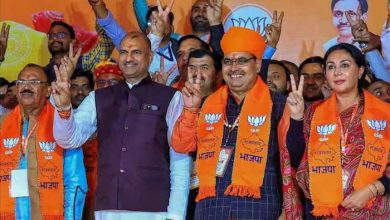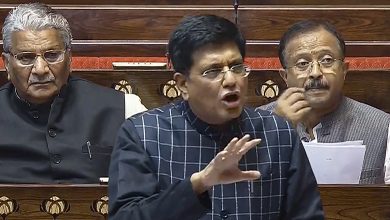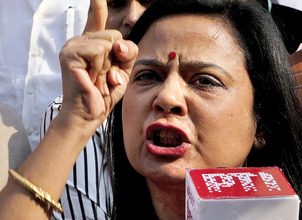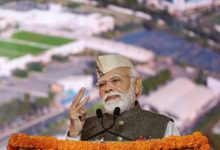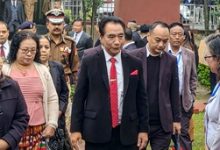PLI Scheme: Giving a big boost to Manufacturing, Exports and Employment
Reopening application window for Production Linked Incentive (PLI) scheme for White Goods has put the spotlight back on this very significant economic reform of the Government of India. The scheme has enormous potential to transform manufacturing sector by encouraging domestic and local productions to the tune of Rs. 30 lakh crore over the next five years, boosting economic growth and amplifying exports. This economic move has the potential to generate around 60 lakh employment opportunities, especially micro jobs which India need the most at this juncture.
PLI schemes are also aimed at enhancing competitiveness and leverage the untapped potential of Indian industries to fulfill the vision of an Aatmanirbhar Bharat. Keeping in view this vision, an outlay of INR 1.97 lakh crore had been announced in Union Budget 2021-22 under PLI schemes for 13 key sectors starting from fiscal year 2021-22. With the announcement, significant creation of production, employment, and growth is expected over the next five years and more.
Finance Minister Nirmala Sitharaman announced an additional allocation of Rs 19,500 crore under the PLI scheme for manufacturing high efficiency solar modules in her Union Budget 2022-23, besides committing financial support to farmers to take up agro-forestry.
The PLI schemes presently in place for 14 sectors, are being implemented by the concerned ministries and departments. Earlier, there was no plan to relax PLI scheme for White Goods, but considering their potential, the decision was taken to give this sector a big boost, attracting 42 applicants with indicative investment of Rs. 4,614 crore as on 03.11.2021.
The PLI schemes for various sectors are helping a lot to the post-Covid industrial and economic recovery. There appears to be positive industry feedbacks about these schemes as textile, automotive and white goods have started giving a good sign of growth. As per Piyush Goyal, Union Minister of Commerce & Industry, India wants to double its exports of auto components to 30 biliion dollar by 2026, which is presently 15 billiion dollar, though the present global auto component trade hovers around 1.3 trillion dollar.
The 14 key sectors coming under the PIL scheme include already existing 3 sectors namely – Mobile Manufacturing and Specified Electronic Components, Critical Key Starting materials/Drug Intermediaries & Active Pharmaceutical Ingredients and manufacturing of medical devices and 10 new key sectors like Automobiles and Auto Components, Pharmaceuticals Drugs, Specialty Steel, Telecom & Networking Products, Electronic/Technology Products, White Goods (ACs and LEDs), Food Products, Textile Products: MMF segment and technical textiles, High efficiency solar PV modules, and Advanced Chemistry Cell (ACC) Battery. PLI Scheme for drones and drone Components, has also been approved by the Union Cabinet in September 2021 taking the tally to 14.
The investments made by the companies in different sectors approved under the PIL scheme are different. For example, the companies coming in the category of large scale electronics manufacturing, have invested approximately Rs. 3,000 crore after first of April, 2020, while from pharmaceuticals sector, 55 applications have been approved with a total committed investment of Rs.5146.19 crore.
Implementing this scheme, the Government of India does underline the need to reduce logistics costs to make our production processes competitive in global markets. In the process, states are advised to reduce their specific procedural disabilities, if any, to boost the manufacturing sector. They are also urged to undertake suitable amendments in labour laws to take ample advantages of PLIs induced manufacturing growth.
The Central government also wants the states to take advantages of the PLI scheme thanks to their relatively low labour costs and huge demographic dividend. Since all states can’t be good in all sectors, hence niche and specific areas are being suggested to excel by taking comparative cost advantage in key areas. States are also advised to work in areas like land acquisition, skill development, government-industry partnership to take maximum advantage of the schemes along with technology transfer between companies and industries, indigenisation of chip manufacturing and localization of the manufacturing of television, air conditioner, Set Top Box, CCTV, mobile handsets and others. Government support is also helping and inspiring AC manufacturers to switch over to CFL-free cooling technology, shifting to clean energy in automobiles sector and indigenous production of magnets and electric motors.
Coming back to the recent initiative of the central government, the PLI Scheme for White Goods for manufacturing of components and sub-assemblies of Air Conditioners (ACs) and LED Lights, which was approved by the Union Cabinet in April last year with an outlay of Rs 6,238 crore, was notified by the Department for Promotion of Industry and Internal Trade (DPIIT) on 16 April 2021. Now, applicants were given flexibility to choose the gestation period either up to March 2022 or up to March 2023.
The Union Cabinet had given approval for the PLI Scheme for White Goods for manufacture of components and sub-assemblies of Air Conditioners (ACs) and LED Lights on 7.04.2021 in pursuance of Prime Minister’s clarion call for ‘Atmanirbhar Bharat’ to bring manufacturing at the center stage and emphasize its significance in driving India’s growth and creating jobs. The Scheme is to be implemented over a seven-year period, from FY 2021-22 to FY 2028-29 and has an outlay of Rs. 6,238 crore.
A total of 52 companies had filed their application for the PLI scheme. After evaluation of all the applications, 42 applicants with committed investment of Rs 4,614 crore have been provisionally selected as beneficiaries under the PLI scheme for the sector. The selected applicants include 26 for Air Conditioners manufacturing with committed investments of Rs. 3,898 crore and 16 for LED Lights manufacturing with committed investments of Rs. 716 crore.
Additional applications are invited under Clause 9.2 of the Scheme Guidelines for investments under the Scheme on the same terms and conditions as stipulated in the Scheme Guidelines issued on June 04, 2021, as amended from time to time. The incentive shall be available only for the remaining tenure of the Scheme.
The application window for the Scheme shall remain open for the period from the 10th March to 25th April, 2022 (inclusive) on the same on-line portal having URL as https://pliwhitegoods.ifciltd.com/. No application shall be accepted after the closure of the application window. The on-line applications for the Scheme, which is to be implemented over a seven-year period, from FY 2021-22 to FY 2028-29, were invited from 15 June 2021 to 15 September 2021.



